
Pop quiz: are companies focusing too much on top-of-funnel content?
Depends on who you ask.
The “safe” take here is to say that businesses should craft content that covers every stage of the marketing funnel. That’s probably the correct assessment, too.
But recently I’ve seen more of my B2B SaaS clients make a conscious effort to align their blog content with the appropriate funnel stage.
And anecdotally, top-of-funnel content is still very much a top priority.
Why, though? Good question.
For the sake of uncovering an answer, I put together this brief guide breaking down what top-of-funnel content is and the not-so-hidden value of creating it.
What is top-of-funnel content, anyway?
Let’s kick things off with a quick definition.
Top-of-funnel (TOFU) refers to the earliest stage of the customer journey (imagine the widest part of a literal funnel). Marketing content created at this stage is meant for people who are problem-aware, but not quite ready to make a purchase (or even browse for products).
The goal of top-of-funnel content is to raise awareness and educate your target audience. Blog posts written at this stage are going to cover general, big-picture concepts and topics. As such, these posts are also prime for search traffic.
Top-of-funnel blog posts typically tick the following boxes:
- Written conversationally, steering away from jargon or technical examples that might overwhelm readers
- Avoids any sort of “hard sell” or transactional call-to-action (although light product mentions are okay)
- Assumes that the post being read is the reader’s first encounter with a product
As customers educate themselves and move beyond the awareness stage, they require more complex and in-depth content to eventually convert. This is where your efforts at the middle-to-bottom of the funnel (think: case studies, webinars, product videos) come into play.
Conventional wisdom says the function of most SaaS company blogs is to attract folks at the top. According to a recent survey, businesses claim that content marketing is most effective at the top of the funnel (64%) as opposed to the middle (54%) or bottom (53%).
Couple this with the fact that 65% of buyers claim that B2B content is more effective when it’s not trying to sell to readers.
The takeaway? Top-of-funnel content serves as an avenue to attract and nurture leads as part of the long-term buyer’s journey.
What are some examples of effective top-of-funnel content?
Here are some quick top-of-funnel content examples to give context to the definition above.
This post from Optimizely is a solid starting point. Giving readers a rundown of the basics of A/B testing, the post’s illustrations and definition-heavy format seamlessly move readers from Point A to Point B. Although there are product mentions sprinkled throughout, they’re anything but in-your-face.
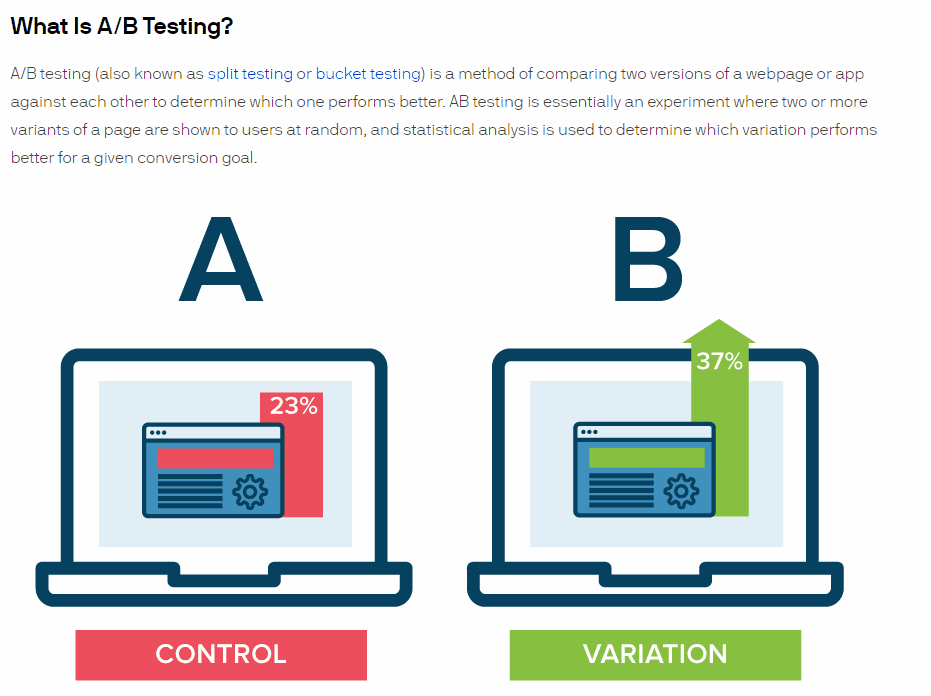
The fact that this post is among the top three Google results for “What is A/B Testing?” is also telling. Again, TOFU posts perform well for the sake of search and serve as a basic introduction to your service. That’s also why top-of-funnel blogs are a staple of any SaaS content strategy.
Let’s look at an example of top-of-funnel content that isn’t a blog post. This infographic HelpCrunch highlights how image-based content can support top-of-funnel marketing efforts elsewhere. For example, this graphic would be the perfect basis for an email campaign or social media post.
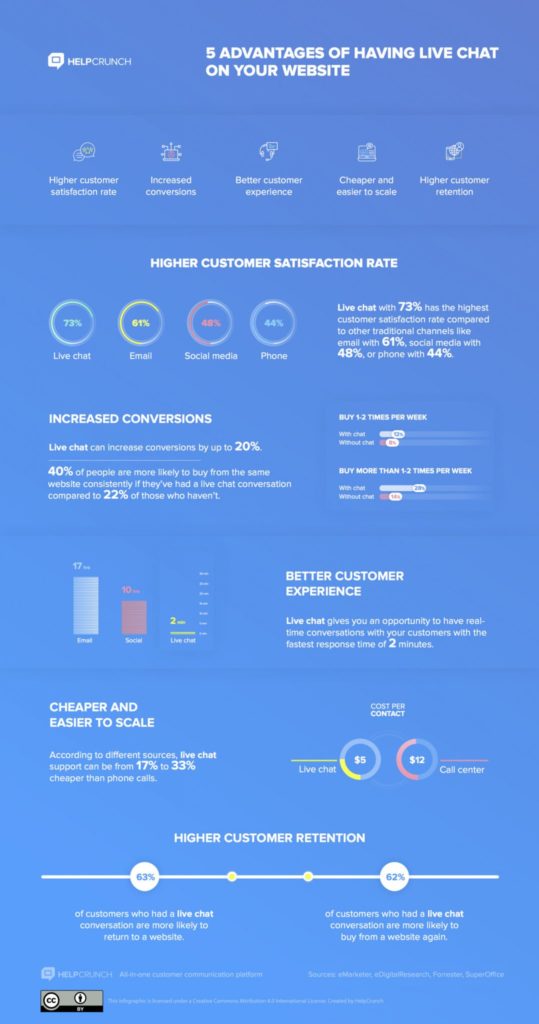
Here’s another example, this time a video and blog post combo from Atlassian. The former serves as an introduction to what a Kanban board is…
…while the blog component incorporates some light product mentions that provide additional context to the concept in action.
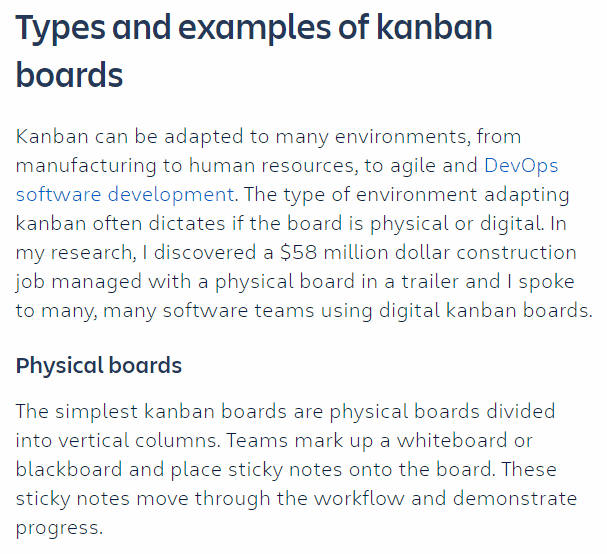
What’s the case against top-of-funnel content?
Let’s be clear: nobody is saying companies should stop creating content at the top of the funnel altogether.
However, there’s plenty of debate regarding which funnel stage should be prioritized when it comes to content creation.
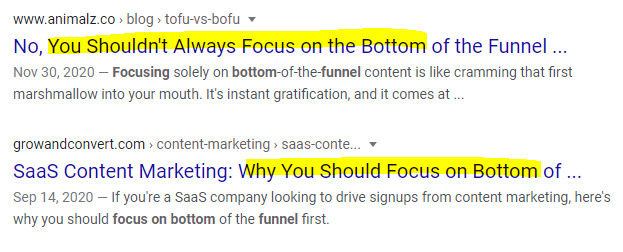
Perhaps the biggest downside of top-of-funnel content?
Measuring your ROI. This is an oft-cited pain point of content marketing in general, particularly when it comes to awareness stage content
Because people (typically) aren’t making purchase decisions based on TOFU blog posts.
Thing is, they’re not supposed to. Top-of-funnel content is part the playing the long game.
However, this creates a sort of accountability problem for businesses who need to prove that their content marketing is actually, you know, paying off.
Food for thought: research says that 86% of marketers claim that successful B2B content marketing creates brand awareness, but only 53% claim that those efforts generate sales.
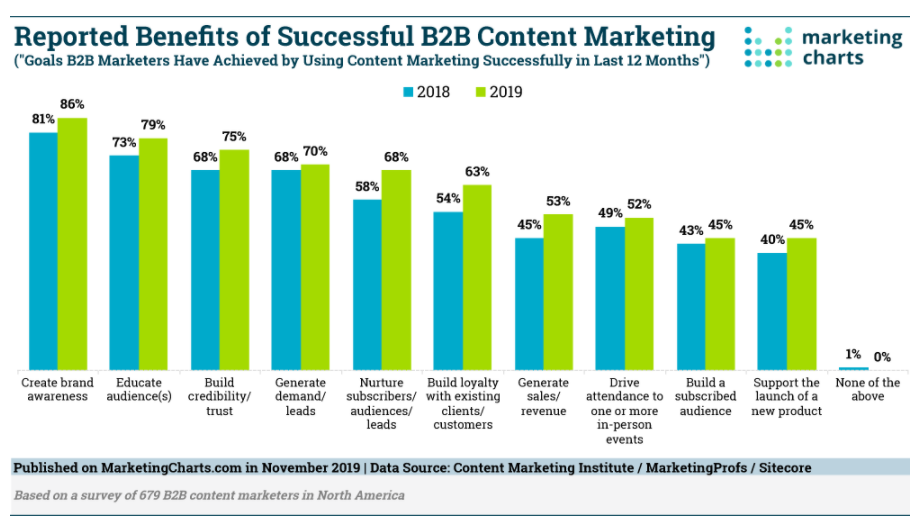
For some companies, paying for content in exchange for greater brand awareness and more mentions might totally be worth it.
But SaaS startups and businesses on tight budgets understandably want to see a more concrete financial ROI from their efforts.
This is where middle-to-bottom funnel content really shines. For example, it’s easy to quantify leads, demos and sales as a result of webinars or whitepapers which require sign-ups. Because these pieces of content result in direct sales, they’re perceived as more valuable and less “fluffy.”
Again, companies should focus on each stage of the funnel. You can’t have the top without the middle or bottom, obviously. The debate regarding top-of-funnel content versus middle-to-bottom is a matter of “how much” rather than “either-or.”
And this might sound like a cop-out, but the answer really depends on your business, resources and goals.
Why is top-of-funnel content so important, then?
To wrap things up, here a few final points and statistics that highlight the value of TOFU content.
Top-of-funnel content secures readers from search engines
Fact: 72% of B2B buyers start their journeys with a generic Google search. This signals the power of top-of-funnel blog posts targeting broad search terms. For example:
- “What is [x]”
- “How to [y]”
- “[z] Definition”
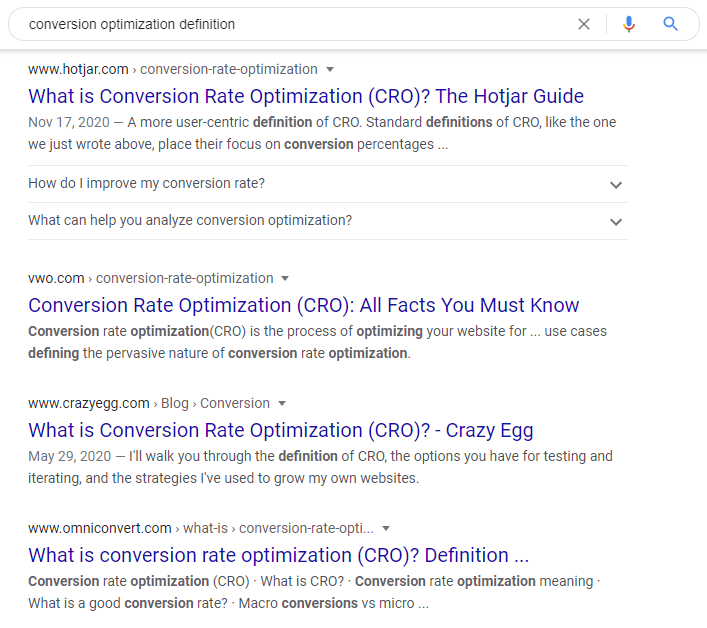
This also spells out the fact that creating top-of-funnel content can give SaaS brands a much-needed competitive advantage in the SERPs.
Nobody should create content “just because.” That said, you obviously don’t want your competitors ranking for every other TOFU query in your industry while you’re stuck on page 5 of Google.
Top-of-funnel content encourages buy-in from other stakeholders
The modern B2B buying process involves between six and 10 people on average. This includes folks who know every little detail about your product, but also stakeholders who’ve never heard of you.
This is where top-of-funnel blog posts and videos both come in handy. Rather than require decision-makers to sift through an e-book or attend an hour-long webinar, shorter-form TOFU can spell out “just the facts” for them.
Top-of-funnel content empowers brands to focus on more than selling
Remember: people don’t want to read pure sales pitches.
As such, top-of-funnel content presents a distinct opportunity for B2B brands to highlight their voice and values. Think about how you can cement your identity prior to selling.
If nothing else, you need top-of-funnel to complete your content strategy
As noted in my guide to SaaS content, B2B buyers spend months researching any given product before making a purchasing decision.
Months. That’s a long time.
And as highlighted by the examples and stats we’ve talked about so far, top-of-funnel content is often where that search begins.
Because people have to start somewhere, right?
An effective content strategy requires content at the top-of-the-funnel. Creating only middle-to-bottom funnel resources means that you’re freezing out potential customers before they have a chance to learn who you are, let alone make a purchase.
What’s your take on top-of-funnel content?
By now I probably sound like a broken record, but the importance of aligning your content with your marketing funnel can’t be stressed enough.
Whether you frontload your strategy with content at the top or give the middle-to-bottom stages more attention totally depends on your goals. If you’re getting tons of traffic but few qualified leads, focusing on the latter might make more sense.
Either way, each stage of the funnel deserves your attention.
So, where do you stand on the top-of-funnel content debate? Let me know on Twitter, comment below or shoot me an email.
Great piece that shows the benefits of funnelling and why it is important.